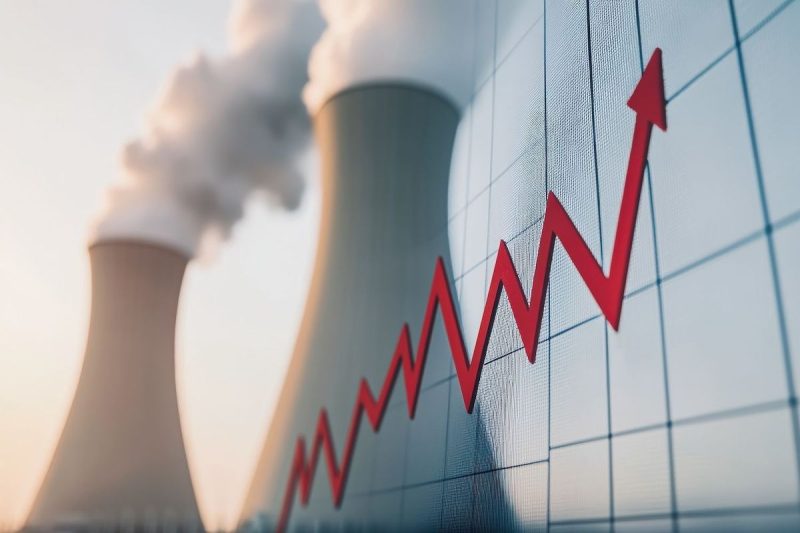Shares of Cameco (TSX:CCO,NYSE:CCJ) were on the rise after the uranium major announced it is reducing its annual production guidance due to expansion delays at the McArthur mine in Saskatchewan, Canada.
Instead of the projected 18 million pounds of U3O8 the company was aiming for from its McArthur River joint venture with Orano, the revised output tally reduces 2025’s production total to between 14 million and 15 million pounds.
In January, Cameco warned that delays at McArthur River — including slower-than-expected ground freezing, development setbacks and labor constraints — could affect its 2025 production outlook.
“We have determined that we are unable to fully mitigate the expected impact of the delayed development and slower than anticipated ground freezing in the first half of 2025,” Cameco’s statement notes.
Strong output from the Cigar Lake mine may help offset the McArthur River delays, the company said, adding that its diversified assets and risk management strategy position it to meet commitments and maintain long-term value.
In total, a strong performance at Cigar Lake could provide an additional 1 million pounds.
The uranium miner offered assurances that it will fulfill all delivery obligations with its customers.
“With favourable market prices for uranium today, we continue to have the option to buy in the spot market if it is advantageous for us to do so,” the company said, noting that it can source material through other means as well.
News of the shortfall sent shares of Cameco higher, with the company rising from C$105.91 on Thursday (August 28) to C$114 during after-trading hours. Values had pulled back to the C$105 range by midday on Friday (August 29).
Broader uranium market challenges
Cameco’s production cut is the second output reduction the sector has seen in as many weeks.
On August 22, Kazatomprom, Kazakhstan’s state-owned uranium producer, reported plans to lower output in 2026, saying that despite firm long-term prices, market conditions don’t support a return to full capacity.
In a corporate update, the company said its production will be about 10 percent lower compared to earlier targets, dropping from 32,777 metric tons of U3O8 to 29,697 metric tons. The reduction, equal to roughly 8 million pounds, or 5 percent of global supply, will largely stem from changes at its Budenovskoye joint venture.
After spiking to triple-digit levels unseen in more than a decade in early 2024, the spot price has been under pressure, falling as low as US$63.36 in March of this year. However, prices have steadily grown since then, reaching a second quarter high of US$79.01 on June 30 and currently holding at the US$75 mark. Kazatomprom notes that while the spot price remains volatile, the long-term uranium price has held steady at around US$80.
The company plans to exercise its option to operate within a 20 percent deviation of its 2026 subsoil use production levels, with formal guidance to come later. The sector major also also reported stable sulfuric acid supply for 2026, easing concerns after last year’s shortages forced a sharp output downgrade. However, its new acid plant won’t be ready until at least 2026, and higher mineral extraction taxes are expected to weigh on costs.
The updates came alongside half-year results showing that net profit was down 54 percent to 263.2 billion tenge (US$489.5 million), while revenue was off 6 percent at 660.2 billion tenge, largely on weaker sales volumes.
Despite lower near-term output, Kazatomprom said it remains committed to exploration in order to replenish its reserves and maintain its dominance as the world’s top uranium supplier.
Beyond market headwinds, the company highlighted Kazakhstan’s nuclear ambitions, with proposals for three domestic reactors that would require about 1.04 million pounds of uranium each year.
Uranium supply shortage unavoidable?
With tightening margins between uranium demand and global mine supply, these latest announcements are likely to impact market sentiment and could push prices higher.
Taking to X, formerly known as Twitter, Uranium Insider’s Justin Huhn posted an ominous message:
You don’t have to know exactly what will disrupt this market, only that the conditions are there for disruption
— Uranium Insider (@uraniuminsider) August 28, 2025
According to the World Nuclear Association, mine supply currently accounts for 90 percent of uranium demand, with the other 10 percent being fulfilled through secondary supply sources.
However, secondary supply is declining and mine supply has not grown to account for the discrepancy. This is likely to be further compounded by the addition of 70 new nuclear reactors that are currently in the construction phase.
Coupled with heightening energy demands from the artificial intelligence sector, analysts at FocusEconomics are projecting a higher spot price environment moving forward.
“The Consensus among our panelists is for uranium prices to remain well above the levels that prevailed in the 2010s for the rest of this decade, with prices forecast to hover between US$65 and US$80 per pound,” the firm wrote in an email. “That said, panelists don’t see a return to the highs of 2024, a period when the spot price likely got ahead of underlying market fundamentals due to investor exuberance.”
Securities Disclosure: I, Georgia Williams, hold no direct investment interest in any company mentioned in this article.

